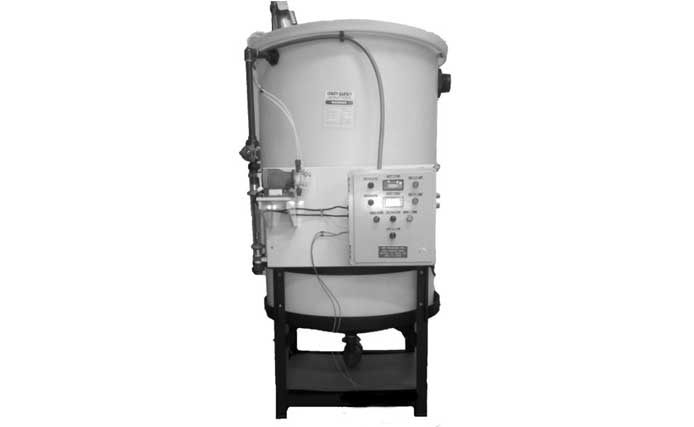PRAB’s pH Adjustment Systems are engineered to pump, measure, treat, neutralize, and discharge wastewater. PRAB works with many customers who produce wastewater that is either too acidic or too alkaline to be discharged into the public sewer. In these cases, a reliable pH adjustment system like the fully automated, skid mounted models offered by PRAB, could be the solution. The pre-packaged pH Adjustment System treats a wide variety of industrial waste streams and are configured to neutralize and automatically adjust the pH of your wastewater.
The system can also remove soluble metal ions from solution by precipitating the ions as a metal hydroxide. This occurs when the pH value of a solution is raised with a common alkaline material such as lime, or sodium hydroxide, causing the corresponding metallic hydroxide compounds to become insoluble and precipitate from the solution.

PRAB begins with a review of the customers application and then focuses on which pH adjustment system will be best suited for its process. Customizable options are offered, simplifying the selection process.
PRAB has streamlined this process with its new water/wastewater analysis instrumentation and complimentary lab with pH testing equipment.
pH is the measure of free acidity or free alkalinity of water. This is measured on a scale of 0-14 where solutions with a pH of less than 7.0 are acids while solutions with a pH of greater than 7.0 are bases. Bases (i.e.- Sodium Hydroxide, etc.), which are alkaline in nature are used to neutralize acids, while acids (i.e.- Sulfuric Acid, etc.) are used to neutralize alkalis.
Having a reliable, automatic monitoring system is essential to ensure that the wastewater treatment system is effectively controlled to obtain the desired results. PRAB offers a Continuous pH Adjusting System for higher flow rates (> 10 gpm) and batch pH Adjusting System for lower flow rates (typically less than 10 gpm).
Before discharging the effluent from a wastewater treatment system to a publicly owned treatment works (or sewer), there is a specific pH range that must be met for compliance as pH is constantly monitored.
Key benefits include reduced risks in overfeeding or underfeeding of the pH adjust chemistry, assured compliance with discharge requirements, improved efficiency of system operation, and reduced labor expense by not having a worker constantly monitoring.